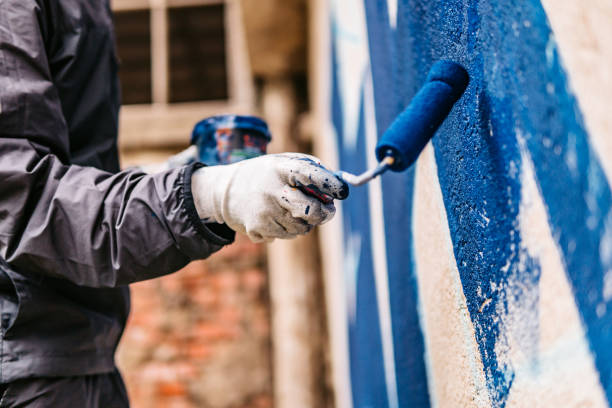The facade of your home is its first impression, offering a glimpse into your personal style and the overall aesthetic of your property. Painting the facade can rejuvenate an aging exterior, increase curb appeal, and even boost the value of your home. This comprehensive guide will walk you through the process, from preparation to the final coat.
Why Paint the Facade?

- Curb Appeal: A fresh coat of paint can make your home stand out, making it more inviting and visually appealing.
- Protection: Quality exterior paint acts as a barrier against weather elements, protecting your home from moisture, UV rays, and temperature changes.
- Value Addition: A well-maintained facade can increase the market value of your home, making it more attractive to potential buyers.
Choosing the Right Paint
Selecting the appropriate paint is crucial for durability and aesthetics. Consider the following factors:
- Type of Paint: Use exterior-grade paint designed to withstand outdoor conditions. Acrylic latex paint is popular for its durability and ease of application.
- Finish: Choose between matte, satin, and gloss finishes. Satin is often preferred for its balance of sheen and ease of maintenance.
- Color: Opt for colors that complement your home’s architecture and surrounding environment. Neutral tones are timeless, while bold colors can make a statement.
Tools and Materials Needed
- Exterior paint and primer
- Paint brushes and rollers
- Painter’s tape and drop cloths
- Scrapers and sandpaper
- Ladder or scaffolding
- Pressure washer (optional)
Preparation Steps
- Clean the Surface: Use a pressure washer to remove dirt, mold, and old peeling paint. A clean surface ensures better paint adhesion.
- Repair Damage: Inspect for cracks, holes, and other damages. Fill gaps with caulk and repair any structural issues.
- Scrape and Sand: Remove loose or flaking paint using a scraper. Sand the surface to create a smooth, even base for the new paint.
- Protect Surroundings: Cover windows, doors, and fassaadi värvimine landscaping with painter’s tape and drop cloths to prevent accidental splatters.
Priming
Priming is essential for achieving a uniform finish and enhancing paint adhesion. Apply a coat of primer suitable for exterior surfaces. Allow it to dry completely before moving on to painting.
Painting Techniques
- Start from the Top: Begin painting at the top of the facade and work your way down. This helps in controlling drips and ensuring even coverage.
- Use the Right Brush or Roller: For large surfaces, a roller can speed up the process. Use brushes for edges and detailed areas.
- Apply Multiple Coats: Two coats are generally recommended for a durable, even finish. Allow the first coat to dry completely before applying the second.
- Maintain a Wet Edge: Work in small sections and maintain a wet edge to avoid lap marks and ensure a smooth finish.
Post-Painting Care
After the paint has dried, remove painter’s tape and clean up the area. Inspect the facade for any missed spots or touch-ups needed. Proper maintenance, such as regular cleaning and timely touch-ups, will extend the life of your paint job.
Safety Tips
- Use Proper Equipment: Ensure ladders and scaffolding are stable and secure.
- Wear Protective Gear: Use gloves, masks, and goggles to protect against fumes and paint splatters.
- Work in Suitable Weather: Avoid painting in extreme temperatures or during wet, windy conditions.
Conclusion
Painting your home’s facade is a rewarding project that can significantly enhance its appearance and longevity. With careful planning, the right materials, and attention to detail, you can achieve a professional-looking finish that will stand the test of time. Whether you aim to refresh the look of your home or prepare it for sale, a well-executed paint job on the facade is a worthwhile investment.